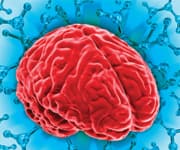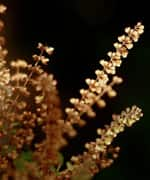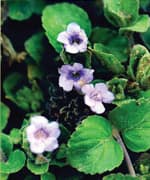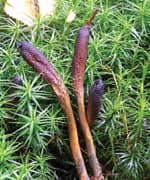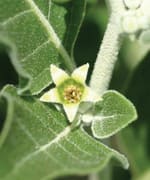Life Extension Magazine®
Scientists have made an alarming discovery—higher stress levels can cause accelerated shortening of telomeres.1-5 In a recently published study, researchers found that depression-related stress results in the significant shortening of telomeres—the caps at the ends of chromosomes—an indication of accelerated aging!1 The publication of this study emphasizes the importance of minimizing the impact of internal and environmental stress on the body. An estimated 75-90% of visits to primary care physicians are now related to the effects of stress,6 and this new study documents how lethal stress can be to our well-being and longevity. Telomeres, Stress, and AgingTelomeres are protective DNA molecules. Often compared to the plastic caps on the ends of shoelaces, telomeres are found on the ends of coiled pieces of DNA known as chromosomes. They keep the chromosome material from deteriorating, or fusing with other chromosomes. Every time chromosomes divide, the telomeres at the ends shorten.7 As telomeres are increasingly consumed, they can be replenished by an enzyme called telomerase reverse transcriptase. The eventual shortening of telomeres is correlated with cellular senescence—and aging.8 Ultimately, the telomeres become so depleted that the cell can no longer divide (known as the Hayflick limit), and that cell dies (apoptosis).9 Scientists have discovered that the multiple biochemical pathways of chronic stress dampen telomerase and accelerate telomere-shortening.1-5 The most recent study found that the telomeres of patients with depression-related stress were over 5% shorter than the telomeres of those who had not been diagnosed with depression.1 Stress and Homeostasis
Described as “our leading health problem,” sustained negative stress is now acknowledged as a key driver behind many of today’s health complaints, both psychological and physical.6 Because the term “stress” has long been incorrectly used, it lost its medical meaning. People often use the term to describe any situation they don’t like. For this reason, neuroscientists have recently clarified the term to mean:
Chronic negative stress triggers a number of critical changes throughout the body that act along multiple biochemical pathways, including the endocrine, nervous, and immune systems. As long as stress levels are low, the effects of stressors are modulated by homeostasis, the body’s ability to maintain harmonious equilibrium by constantly readjusting its physiological processes. Cells and tissues exist in a constantly changing environment, but homeostasis keeps steering internal biochemical and bioelectrical levels back to their near-optimum points. However, when stress is severe, chronic, or multi-layered, numerous biochemical changes overwhelm the body’s homeostatic mechanism (“environmental demand exceeds the natural regulatory capacity”). Studies have found that these harmful effects can persist long after a stressful situation has been normalized.11,12 As a result, key biochemical levels can remain for too long at suboptimal levels.2 This is called homeostatic imbalance. Some of the many disease states associated with stress-induced homeostatic imbalance include obesity, diabetes, osteoporosis, hypertension, cardiovascular disease, infectious disease, gastric ulcer, cancer, gastrointestinal complaints, skin issues, neurological disorders, sexual dysfunction, psychological problems, suppressed immunity—and reduced telomerase and shortened telomeres and, as a result, accelerated cellular and tissue aging.1-5 Scientists have long known that homeostasis can be supported through the use of natural extracts called adaptogens. But to be effective against the onslaught of chronic stress, these pro-homeostatic botanical extracts would need to be combined so that their various mechanisms of action would complement each other to modulate the multiple pathways of stress. Based on research from a variety of disciplines, researchers have discovered how extracts such as Holy Basil, Bacopa, Cordyceps, and Ashwagandha may protect against a broad range of chronic stress effects. Full appreciation of the enormity of this finding requires an understanding of the multiple pathways through which stress disrupts homeostasis.
The Multiple Pathways of StressJob pressure is recognized as the leading source of stress,13 but whatever the stressor, the cascade of physiological responses is the same. First, within seconds of the stressful event, various chemicals—neurotransmitters and hormones such as cortisol are released into the bloodstream. They launch the initial fight-or-flight, stress-adaptation responses in which blood glucose rises, blood vessels constrict, the heart races, and blood is diverted away from the digestive system. These responses originate at the cellular level and within every key body system, including the neuroendocrine system, the hypothalamus-pituitary-adrenal (HPA) axis, the immune system, and the primary (endogenous) antioxidant enzyme system. Second, within minutes of the stressful event—and possibly lasting for several hours, weeks, or longer—specific biochemical pathways are activated within these systems, disrupting the body’s natural homeostasis. If the body cannot restore equilibrium quickly, permanent damage occurs. The end result is a vast spectrum of chronic diseases.1-5 The biochemical effects of stress can be complicated and diverse, but basically, they contribute to the development of or create imbalance in the following:2,14-18
Scientists are finding that stress-induced imbalances in levels of cortisol and other stress-affected substances may be seriously damaging important areas of the brain.
Inhibiting Stress PathwaysAdaptogens are a pharmacological group of compounds that metabolically support the ability of an organism to respond appropriately to stress, preserve structure and function from the damaging effects of stress, and hasten recovery of homeostasis. The rebalancing effects of adaptogens involve a complex interplay of physiological mechanisms. Adaptogen’s main activity is the increase of a heat shock protein known as Hsp70 that plays a key function in cell survival and apoptosis (programmed cell death).19 Different adaptogens modulate different levels along the hypothalamus-pituitary-adrenal (HPA) axis. Some mediate cortisol, nitric oxide, or molecular chaperons.19 When combined adaptogens work together to modulate the multiple pathways of stress, the multiple benefits include improved mental and physical performance, reduced incidence of chronic disease, and increased longevity.2,19 Scientists investigated numerous extracts—some used for thousands of years to treat various stress-related symptoms. This research led to four potent adaptogens that can provide a united defense against the multiple cellular pathways of chronic stress: Holy Basil (Ocimum tenuiflorum)
Also known as tulsi, Holy Basil has been used as a medicinal herb for thousands of years. Studies have shown that it modulates the effects of a variety of stress responses, as well as decreases cholesterol and increases endurance.20-25 Researchers have found that Holy Basil helps maintain internal equilibrium by normalizing specific, stress-induced, homeostatic imbalances in the areas of:
Bacopa (Bacopa monnieri)
This aquatic plant, also known as water hyssop, is found in tropical and subtropical regions, and has been used for several thousand years, especially in India, as a rejuvenating herb. Research on Bacopa monnieri has indicated that it has an adaptogenic effect on systems related to cognition, motivation, sensory, and motor function.31-35 It has also shown to provide a significant decrease in stress-related anxiety, mental fatigue, and memory loss.33 Recently, scientists have found that Bacopa modulates particular, stress-triggered disruptions in homeostasis:
Cordyceps (Cordyceps sinensis)
Use of Cordyceps, which is a remarkably versatile medicinal mushroom, dates back almost two centuries. However, Cordyceps really grabbed Western attention in 1993 after its use was suggested to be the secret behind the setting of a series of long-distance records by Chinese female runners within a very short period of time. Research has since established it as a therapy for the accelerated strengthening and revitalization of the body after exhaustion or lengthy illness.39-41 Studies show that Cordyceps normalizes stress-induced homeostatic imbalances in the following areas:
Ashwagandha (Withania somnifera)
Ashwagandha, also known as Indian ginseng or Withania somnifera, is considered the foremost adaptogen in Ayurvedic medicine. Studies have shown that it helps the body to recover from the energy loss and mood-altering effects of stress.47-50 Scientists have found that Ashwagandha modulates stress-induced changes to homeostasis in the areas of:
Inhibiting the Effects of Stress in HumansAs we have seen, each of these four botanical extracts have been individually studied for their modulatory effects on stress in humans. The scientists who conducted these studies set out to determine whether these adaptogens could not only modulate multiple biochemical pathways of stress but also provide experiential improvements in mental and physical health. Across all studies, subjects were given standardized doses of the botanical, then evaluated for a range of indicators of health and wellbeing, looking for measurable improvements in vitality and performance. The results of these studies set the standard for clinical dosages. Holy BasilTo test the ability of Holy Basil to modulate homeostatic imbalance, scientists arranged a randomized, double-blind, placebo-controlled study in which 71 humans took 1,200 mg a day of Holy Basil (Ocimum tenuiflorum), and 79 others took a placebo. For both groups, various cognitive and energy-related symptoms of stress were measured using a standard analysis (RMANOVA) at 0, 2, 4, and 6 weeks. Scores were determined to be substantially improved for all stress related symptoms measured, including forgetfulness, sexual problems of recent origin, frequent feeling of exhaustion, and frequent sleep problems of recent origin. Also, the overall stress-management scores were found to have improved by an additional 39% for the Holy Basil group over the placebo group—and this improvement was observed in just 6 weeks!53 BacopaScientists set up a randomized, double-blind, placebo-controlled study for which they enlisted 20 healthy older adults age 60-75, each of which were given a standardized Bacopa monnieri extract in a 300 mg oral dosage once per day. (This is equivalent to 132 mg daily of a more concentrated Bacopa extract.) Focus, attention, learning, memory, mood, and overall intelligence—all of which can be negatively impacted by stress—were assessed using a battery of standardized tests. After 4 months, several key indicators of cognitive function improved significantly from baseline measurements—including a 23% improvement in focus and attention, a 24% improvement in aspects of learning and memory, a 15% improvement in performance measures of intelligence, and a 30% improvement in mood, particularly depression. One of the most compelling findings in this study was the trend to do better on tests of attention, processing speed and working memory, which could be considered the “front end” of cognitive processing. In other words, good performance in key cognitive domains requires adequate attention and processing speed—which Bacopa is shown to support.54 CordycepsThe day-to-day experience of the effects of chronic stress can include reduced libido. To evaluate the capacity of Cordyceps sinensis to protect against loss of libido, scientists enlisted 189 men and women with decreased sex drive for a randomized, double-blind, placebo-controlled study. The test group took Cordyceps (strain Cs-4) in dosages of 3 grams daily. (This translates to 375 mg of commercially prepared product, because it is formulated as an 8:1 extract.) Among the test group, over 66% experienced improvement in sex drive—in just 40 days.39 It is important to note that Cordyceps Cs-4 did not simply support continued sex drive in healthy participants; it reversed previously assessed libido loss. AshwagandhaScientists analyzed the stress-attenuating effects of Withania somnifera in a double-blind, placebo-controlled, randomized study of 98 chronically stressed, adult men and women. Subjects were randomly assigned to the placebo group, or to one of three Ashwagandha dosage groups: 125 mg once a day, 125 mg twice a day, or 250 mg twice a day. Stress levels were assessed at the beginning of the study, and again at 60 days of treatment, using a modified Hamilton anxiety (mHAM-A) scale. Also, certain biochemical and clinical values were measured, such as cortisol or blood pressure levels. (A reduced score on the mHAM-A scale indicates fewer symptoms of: fatigue, flushing, perspiration, loss of appetite, headache, muscle pain, feelings of impending doom, palpitations, dry mouth, sleeplessness, forgetfulness, irritability, or inability to concentrate.) After 60 days, the group taking the least Ashwagandha—125 mg daily—had significantly reduced mHAM-A anxiety scores. This arm of the study also showed significantly decreased serum C-reactive protein (a measure of inflammation), pulse rate, and blood pressure, as well as balanced levels of serum cortisol.14 After the same 60-day period, the higher-dose Ashwagandha groups also showed greater, dose-dependent responses in these same anxiety and biochemical parameters. But the researchers found that, additionally, the higher-dose subjects showed significantly reduced mean fasting glucose, serum lipid profiles, and cardiac risk ratios.14 It is particularly significant that all of the participants in this study had previously been diagnosed as chronically stressed. No adverse effects were found for any of the four botanicals used in the studies. The various study findings confirm that these four adaptogenic extracts offer—at a basic biochemical level—substantial homeostatic protection against the multiple pathways of stress.
SummaryIn an alarming development, scientists have discovered that higher stress levels can result in the accelerated shortening of telomeres—an indicator of accelerated aging. The good news is a formulation comprised of four broadly-acting adaptogenic extracts—Holy Basil, Bacopa, Cordyceps, and Ashwagandha—has been developed that may work to modulate multiple stress pathways. Scientists have shown in controlled human studies—including patients who were chronically stressed—that these pro-homeostatic extracts result in experiential improvements in mental and physical health. Holy Basil, for instance, improved stress management scores by 39% more than placebo—in just 6 weeks. Bacopa improved mood scores, particularly depression, by 30%.54 If you have any questions on the scientific content of this article, please call a Life Extension® Wellness Specialist at 1-866-864-3027. | ||||||||||||||||||||||||
| References | ||||||||||||||||||||||||
|





